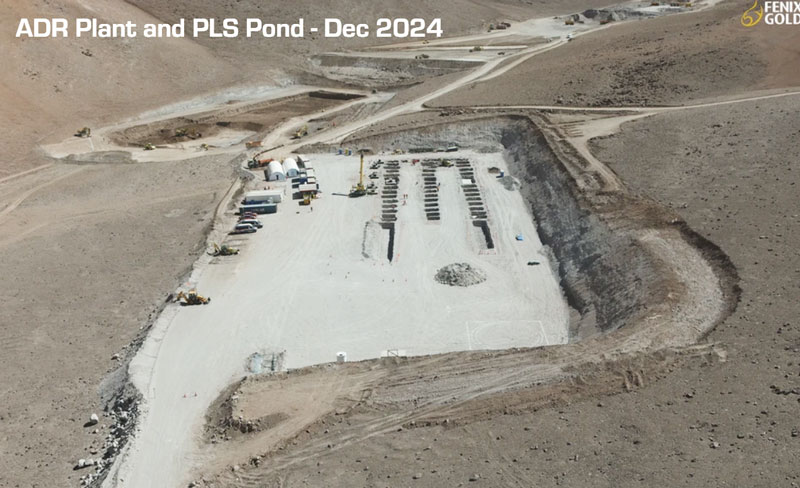Canadian-based Rio2 Limited is making strides at its Fenix gold mine in the Maricunga Gold Belt of the Atacama region of Chile.
Pre-construction activities first commenced in 2022, prior to the Environmental Impact Assessment (EIA) for the project being rejected by the Chilean environmental regulators. Those activities included ordering and securing of long lead items for the construction of the adsorption, desorption, and gold recovery (ADR) plant and associated infrastructure; fabrication of ADR plant components such as tanks and ADR plant foundation footings; construction of a 565-person camp and associated mess and office facilities at the Lince infrastructure site; and water loading facilities at the Nueva Atacama water treatment facilities in Copiapo.
The project’s EIA was subsequently approved in December 2023 following a successful 18-month appeal process, and construction recommenced at Fenix in October 2024.
Construction is expected to be completed in November 2025. First gold production is currently guided for January 2026.
Bulk earthworks at the plant site have been completed and concrete bases for the footings of the processing plant have been poured. The ADR plant will be housed within a steel framed building cladded with modular thermo-acoustic panels.
Earthworks have commenced on the leach pad stability platform, which forms the base of the Phase 1 leach pad. The leach pad has been designed to be built in four phases over the 17-year mine life of the 20,000 tonnes per day operations.
Excavation earthworks for the PLS pond have commenced adjacent to the ADR plant. The PLS pond will be lined with a double HDPE geomembrane liner system and have an installed capacity of 28,000 cubic meters. As determined by water balance modelling in the 2023 Fenix Gold feasibility study, a larger major events pond is currently planned to be built in year 6 of the mine operation.
Recruitment activities for Fenix have focused on hiring key personnel for construction activities and future mine operation roles. Personnel numbers are increasing and, currently, over 531 staff and contractors work on-site. At the end of Q4 2024, approximately 50% of the workforce were from the Atacama region, and 16% of on-site personnel were women.
At the end of Q4 2024, the project achieved 161,917 person-hours worked with no lost-time injuries reported.
A preliminary internal study completed by the Rio2 technical team has indicated that the Fenix gold mine has the potential to be expanded from its first phase 20,000 tonnes per day ore mining rate to around 80,000 tpd. Increasing the ore mining rate to this level could see gold production rise from an initial rate of approximately 100,000 ounces per annum to a target range of 250,000-300,000 oz. annually.
To quantify and justify this potential expansion, the company has initiated a mine expansion study with a target completion date by the end of 2025. Long-term water options will be assessed for the study and the most optimal water strategy will be selected and form a base case for project economics.
“To put this potential expansion case on a fast track to a construction decision, Rio2 has recently initiated baseline studies for an EIA study on the project, which is anticipated to be ready for review by the environmental regulators in the Atacama Region by Q4 2026. As most of the required infrastructure for the expanded project (apart from water which is expected to be provided by a third-party provider) is within the existing footprint of the currently approved EIA, the Company expects the EIA process to advance relatively smoothly. Updates will be provided as the expansion study and EIA progress,” the company said.
President and CEO Andrew Cox added: “Site activities at the Fenix Gold Mine continue advancing to plan. We are delighted with the team we are putting together and the milestones achieved so far. We look forward to continued success as we prepare the mine for first gold production in January 2026.”
Source: Rio2

